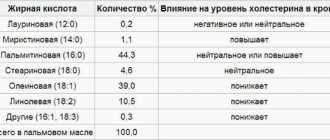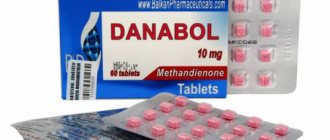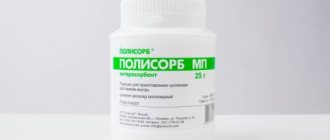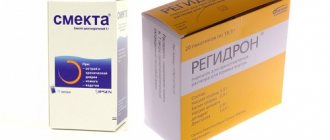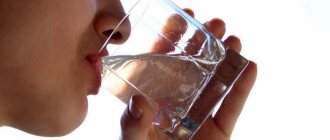European scientists, testing modern refrigerators with a no frost system (they do not need to be defrosted, so some do not wash them for years), calculated: in the drawers for fruits and vegetables alone, the number of harmful bacteria, including E. coli, is 750 times higher than the norm. So after several days of storage, individual products turn into poison.
However, indigestion is an ailment for which we most often tend to diagnose ourselves and treat ourselves. The most common ideas about food poisoning are commented on by Natalya Topilskaya, a gastroenterologist at the Clinic of the Research Institute of Nutrition of the Russian Academy of Medical Sciences, Ph.D.
How does poisoning occur?
Why does sweets poisoning occur? Currently, it is possible to purchase confectionery products for every taste. However, they are not always useful, and in many cases they are even dangerous to health. Unfortunately, sweets are often produced without complying with GOST standards.
Causes:
- Sweet products often contain trans fats; manufacturers use artificial ingredients instead of natural ones. Confectionery products contain too much sugar; as a result, such sweets do not dissolve in the body and have a detrimental effect on cells and health.
- Excessive consumption of sweets provokes the development of constipation or a reverse reaction, disruption of intestinal function.
- Due to the abuse of confectionery products, there is an increase in the activity of fungi, for which sugar is food. The skin suffers, acne and irritation appear.
- People who love to eat sweets in unlimited quantities develop functional hypoglycemia. A sharp decrease in blood sugar levels leads to oxygen starvation and impaired growth. Frequent repetition of this situation gradually provokes the development of diabetes mellitus.
- Another reason for poisoning from sweet cookies and other delicacies is the consumption of products that have expired or are stored in violation of technology.
Confectionery poisoning occurs as a result of excess sugar and other toxic substances entering the body. The presence of an increased amount of “chemicals”, dyes and other compounds provokes disruption of the functioning of internal organs.
Treatment Options
If you suspect sugar poisoning, the first thing to do is call a doctor. Before the ambulance arrives and an accurate diagnosis is made, you can alleviate the patient’s condition:
- Rinse the stomach with warm water or a solution of potassium permanganate.
- Rinse the intestines with an enema based on water or chamomile infusion.
- Give sorbents (1 tablet of activated carbon per 5 kg of body weight, or more modern analogues).
- Drink enough water to prevent dehydration.
If the victim is unconscious, these actions are not recommended: artificial stimulation of vomiting can cause suffocation. Children under 5 years of age are prohibited from performing gastric and intestinal lavage due to poor functionality of the digestive tract.
In the hospital, the patient’s stomach will be rinsed using a thin probe, electrolyte balance will be restored and symptomatic therapy will be prescribed to normalize body temperature, blood pressure, and eliminate pain. A special serum is used to treat botulism.
The harm of chocolate and cakes
Chocolate is one of many people's favorite sweets. However, such a product can be hazardous to health. The main cause of intoxication is the compound theobromine, this substance is present in chocolate. With excessive consumption of cocoa sweets, the harmful compound gradually accumulates in the body, which leads to the development of unpleasant consequences.
Chocolate contains caffeine. It is dangerous for people with diseases of the cardiovascular system.
Some people have increased sensitivity to chocolate products and the fillers in them (poisoning with almonds, peppers, and chocolate jam is possible). The result is a serious allergic reaction. With age, most consumers begin to increase sensitivity to chocolate components, so moderate consumption of such products is recommended for them.
Otherwise, the development of serious negative consequences cannot be ruled out. In people over sixty years of age, with excessive consumption of cocoa bean products, the development of a hypertensive crisis, disruption of the functioning of the digestive system, and the occurrence of a heart attack cannot be ruled out.
You will like the article: “ Cake poisoning - symptoms and causes.”
Cake poisoning is often diagnosed. Many products contain preservatives and unnatural ingredients that often cause allergies. Low-quality products are often used to make cakes, and storage conditions are not observed.
Creams are considered an excellent breeding ground for pathogenic bacteria; spoiled jam can cause botulism.
Overdose
What happens if you eat a lot of sweets? Diarrhea, flatulence, and vomiting occur. An overdose is very dangerous for people suffering from diabetes.
Signs of an excess of monosaccharides:
- disruption of the cardiac and vascular system,
- visual impairment,
- dry mouth and desire for liquids,
- the need to urinate may increase,
- lethargy, weakness, loss of strength.
Any deviations from the norm of monosaccharides provoke disruption of the endocrine system and metabolism.
In case of overdose, it is necessary to reduce the level of monosaccharides in the blood. To do this, eat foods: fresh cucumbers, baked onions, gray fruits and dogwoods, lettuce. This is dangerous for people with diabetes. If a person is dependent on insulin, then the drug is administered every two hours. If a child has eaten a lot of ascorbic acid, gastric lavage should be done.
For an ordinary person, exceeding the dose of monosaccharides ends normally. For patients with diabetes mellitus there may be:
- painful sensations in the limbs,
- vision problems,
- poor wound healing,
- development of trophic ulcers,
- increased cholesterol levels and excess weight.
Feature of poisoning of children
Children love sweets very much.
But parents are advised to monitor their child's sugar intake. Favorite sugar cockerels are often made without complying with GOST. Some manufacturers add milk to them to enhance the taste. However, milk often harbors harmful bacteria.
Cotton candy is made outdoors, where it is exposed to dust and flies or other insects. Such a product poses a danger to children's bodies.
Poisoning from sweets is more severe in children than in adults. The digestive system is completely underdeveloped, the immune system does not resist serious bacteria at full strength. Intoxication develops rapidly and therefore requires attention and prompt assistance.
Diet and nutrition for food poisoning
It is advisable to abstain from food on the first day: the functioning of the gastrointestinal tract is disrupted, and the body simply will not receive nutrients from it. But forced hunger is also not necessary, especially if a small child gets sick. The decisive factor should be the presence or absence of appetite in the victim.
The first meals should consist of small portions 5-6 times a day. Energy value is approximately 2100 kcal. You should adhere to the following diet:
Days 2–3 – oatmeal or rice porridge with water, fruit jelly, wheat crackers or biscuits;
4th and subsequent days - you can add boiled lean meat, pre-chopped, boiled vegetables, fermented milk products, soft-boiled eggs, water soups to the diet.
Until complete recovery, the following are prohibited:
- alcohol;
- spicy and fatty foods;
- canned food;
- smoked meats;
- sweets;
- legumes;
- spices;
- sauces;
- snacks.
It is recommended to limit the consumption of whole milk and protein products. In case of food poisoning, it is better to consume fruits and vegetables boiled, baked and stewed. Honey, bananas, cumin seeds are useful - ingredients that relieve inflammation, relieve symptoms of intoxication, and supply the body with vitamins and microelements. In addition to water, the patient is given herbal infusions of rose hips, anti-inflammatory herbs, and weak tea with honey.
Symptoms of sweet poisoning
Poisoning from sweet foods often occurs due to consumption of low-quality food. Staphylococcal toxin enters the body and provokes unpleasant symptoms. The first symptoms appear quite quickly, after a short amount of time.
Signs:
- nausea, vomiting,
- bad taste in the mouth,
- intense diarrhea,
- pain and dizziness,
- cramps and pain in the abdomen,
- elevated temperature, its rapid decrease is observed,
- apathy, lethargy, drowsiness,
- cold sweat,
- rapid pulse,
- aversion to sweets
- children are diagnosed with overexcitement,
- it is possible that seizures may occur,
- in serious cases, loss of consciousness may occur.
The intensity of the symptoms depends on the severity of the poisoning. There is a deterioration in the general condition with the appearance of the described symptoms. Poisoning with botulism bacteria (which foods contain botulism) manifests itself after a longer period of time and begins as food poisoning.
Hyperglycemia and hypoglycemia
Most often, people are faced with an excess of monosaccharides, which are stored in glycogen. The normal concentration of monosaccharides is 3.4–6.2 mmol/liter. The norm for newborns is 2.8-4.4 mmol/liter. If the concentration of monosaccharides in a child’s blood is elevated, then this is an alarming signal. For an older child, the indicator will be the same as for an adult.
If a person has not eaten food for a long time, the body begins to use reserved glycogen reserves. If there is a lot of glycogen and it does not have time to be processed, then fat is formed. It is difficult for the body to extract monosaccharides from fat cells. That's why it's so difficult to lose weight. In all diets, a necessary condition is the consumption of a large amount of carbohydrates, which are slowly broken down and monosaccharides enter the body in small quantities.
Hyperglycemia is characterized by the following symptoms:
- increased sweating,
- increased heart rate,
- chronic fatigue,
- weight loss,
- numbness of the limbs,
- severe diarrhea,
- fungal diseases,
- shortness of breath,
- problems with immunity,
- renal failure.
To avoid hyperglycemia, you should eat less sweet and fatty foods that are high in carbohydrates.
Glucose deficiency and hypoglycemia are no less dangerous. In this case, the brain suffers the most. Glucose can be absorbed without the participation of the insulin hormone. These are brain cells, muscle tissue and blood cells. Therefore, problems with memory and concentration and weakness appear.
There are two causes of hypoglycemia:
- There is not enough carbohydrate or it quickly enters the cells.
- Pancreas tumor is another symptom of monosaccharide deficiency.
- trembling in the body,
- nervousness,
- cardiopalmus,
- cold sweat at night,
- dizziness,
- headache,
- loss of consciousness,
- pale skin.
Products that have a high glucose content: carrots and honey, grapes and pumpkin, watermelon and candy, sugar and confectionery.
First aid for intoxication
If you notice signs of poisoning from sweet products, you need to quickly call a doctor.
There are many causes of intoxication, some of which pose a danger to human life. Before the medical team appears, the victim’s condition is alleviated by providing first aid. Simple steps will help free the digestive system from toxic substances.
Actions:
- The victim is given a large volume of water to drink and is induced to vomit, repeating until the water becomes clear.
- They allow you to take any sorbent, the most famous is activated carbon.
- It is allowed to use enemas and laxatives to quickly cleanse toxins.
- At elevated temperatures, in case of poisoning, apply wet compresses to the forehead.
- The victim is given water to drink to prevent the development of dehydration.
After providing medical assistance, the person is provided with rest and sent to a medical facility.
The hospital conducts a thorough diagnosis to identify the cause of the poisoning. Based on the test results, suitable treatment is selected. If necessary, additional gastric lavage is performed using a tube.
Painkillers and drugs to normalize the functioning of internal organs and systems are selected. In some cases, antibacterial drugs are used for poisoning.
Classification of antidotes
According to the principle of their action, antidotes are divided into several groups, and, from a chemical point of view, their work is not always associated with a direct reaction. According to the operating mechanism, antivenoms are divided into the following groups:
- chemical;
- biochemical;
- pharmacological;
- physiological;
- modifying poison metabolism;
- immune.
| operating principle | mechanism | examples |
| chemical | direct binding of poison to form a non-toxic or low-toxic compound | unithiol, mecaptide, tetacin |
| biochemical | destroy the chemical bond between the poison and the target cell | pyridoxal phosphate, acyzole |
| pharmacological | antagonism to the action of poison, opposite effect | atropine, proserine, potassium chloride |
| physiological | a mechanism similar to the previous one used in case of poisoning with nerve agent poisons | |
| metabolism modifying | prevent the formation of toxic poison metabolites | ethanol, sodium thiosulfate, ACC |
| immune | chemically destroy protein toxin | serums against infectious toxins and snake bites |
Complex therapy with antidotes
As a rule, antidotes are rarely used in isolation. This is due both to the specifics of the poison and to the effect of one specific antidote. Situations often arise when, after neutralizing the first, its metabolites have to be removed. Most drugs used in the treatment of poisoning have a wide spectrum of action, in addition to chemical and immune ones. Thus, atropine is very often used, and in case of poisoning with completely different substances that have nothing in common either in chemical structure or in action.
Immune serums very often cause allergic reactions, since they themselves are proteins, sometimes foreign to humans. Their administration should be carried out in a medical facility, where prednisolone and adrenaline must be on hand in case of anaphylactic shock.
Preventive measures
It is possible to avoid poisoning from sweet foods by following preventive measures. They are simple and don't require much effort.
Rules:
- Consume sweets in moderation.
- Purchase products containing cream only from refrigerators.
- Observe the storage conditions for sweet products.
- Before purchasing, check the expiration date and ingredients.
It is recommended to remember that fruits are much healthier than chocolate and candies, so it is better to teach children to eat them from a young age. If possible, it is recommended to learn how to make sweets yourself at home, choosing healthy ingredients.
Food poisoning from sweets is possible in children and adults. Sugar in large quantities is harmful to health, so it is recommended to observe moderation when consuming this product.
What kind of poison is solanine?
Solanine is a natural poison of plant origin. It consists of glucose and solanoidin. The structure of the substance is represented by crystals. It is practically insoluble in water, but dilutes well with alcohol. Solanine is found in members of the nightshade family.
Solanine is found in all parts of the plant, least of all in root vegetables. It is found in potatoes, the peel of ripe eggplants, and unripe tomatoes. Ripe potatoes contain very little toxin when properly stored for up to 3 months. After six months, the amount of solanine in the tubers begins to increase and more of it is found in green sprouted potatoes.
Video: sweet horror - do not watch for the faint of heart
Read further:
The benefits and harms of soy and its products for the health of men and women
What are mycotoxins:



